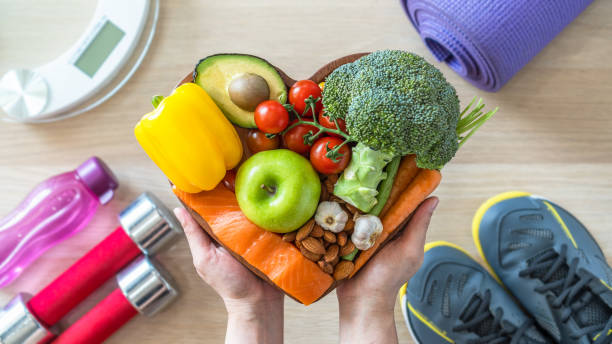🌟 Rise and shine with these 😋 delicious and nutritious overnight oats recipes! 🥣💪 Get ready to indulge in a bowl of yumminess that will keep you energized all day long. 🌞🎉 Don't miss out on these incredible combinations, click here to dive into breakfast heaven! 🤩👉 #StayHealthy #BreakfastGoals
Updated at: 2025-06-22 10:49:11 (5 months ago by Melkisedeck Leon Shine)
Overnight Oats: A Comprehensive Nutritional Analysis and Practical Guide
Overnight Oats: A Comprehensive Nutritional Analysis and Practical Guide
This article presents a detailed analysis of overnight oats, a popular breakfast option, examining its nutritional composition, preparation methodologies, and adaptability to diverse dietary needs. We will integrate relevant principles from nutrition science, culinary arts, and consumer behavior to provide a comprehensive understanding of this convenient and healthy food choice. Key concepts explored include the glycemic index (GI), personalized nutrition, sensory-specific satiety, and mindful eating, all framed within the context of modern consumer preferences for convenience and health.
Nutritional Profile and Health Benefits of Overnight Oats
The nutritional benefits of overnight oats are significant. Oats are an excellent source of soluble fiber, known for its role in promoting digestive regularity and increasing satiety, a crucial aspect of appetite regulation and weight management. The soluble fiber in oats contributes to a low glycemic index (GI), meaning a slow and steady release of glucose into the bloodstream. This helps to regulate blood sugar levels, preventing energy crashes and promoting sustained energy throughout the morning. Oats also provide essential micronutrients, including iron and magnesium, contributing to overall health and well-being. The inclusion of additional ingredients, as detailed below, further enhances this nutritional profile, aligning with the concept of personalized nutrition, where individuals can tailor their intake based on their unique requirements.
The Science of Overnight Oat Preparation
The preparation of overnight oats leverages fundamental principles of food science. The soaking process, which involves combining oats with liquid (dairy or plant-based milk, yogurt), allows for hydration and enzymatic breakdown of the oat starches. This results in a softened, creamy texture without the need for cooking, aligning with modern preferences for convenient and time-efficient meal preparation. The addition of chia seeds enhances the nutritional profile by increasing fiber and omega-3 fatty acid content. This method epitomizes convenience and efficiency, principles deeply embedded in contemporary consumer behavior research.
Customization and Culinary Versatility of Overnight Oats
The versatility of overnight oats is a key factor contributing to its popularity. The basic recipe, typically involving a 1:1 ratio of oats to liquid, serves as a foundation for endless variations. The addition of various ingredients such as fruits (berries, bananas), nuts (almonds, walnuts), seeds (flax, pumpkin), nut butters, spices (cinnamon, nutmeg), and sweeteners (honey, maple syrup) allows for personalization based on individual taste preferences and dietary needs. This directly relates to the concept of sensory-specific satiety, where diverse flavors and textures enhance the overall eating experience and encourage continued consumption of healthy foods.
Example Recipe:
- 1/2 cup rolled oats (certified gluten-free if needed)
- 1/2 cup unsweetened almond milk (or other preferred liquid)
- 1 tablespoon chia seeds
- 1/4 teaspoon vanilla extract
- 1 tablespoon honey or maple syrup (optional, use sparingly)
- Toppings: 1/2 sliced banana and 1/4 teaspoon cinnamon
Instructions: Combine all ingredients in a jar or airtight container. Stir well, cover, and refrigerate overnight. In the morning, stir and enjoy!
Adapting Overnight Oats to Diverse Dietary Requirements
The adaptability of overnight oats caters to a wide range of dietary needs and preferences. For vegan diets, plant-based milk alternatives (almond, soy, oat, coconut) readily replace dairy milk. Individuals following gluten-free diets should select certified gluten-free oats to avoid cross-contamination. The ease of customization demonstrates the inclusivity of this breakfast option, catering to dietary restrictions without compromising nutritional value or taste. This aligns with the principle of dietary inclusion and supports dietary diversity amongst different consumer groups.
Mindful Consumption and Potential Considerations
While highly beneficial, mindful consumption is essential. Excessive added sugars, often found in sweetened yogurt or granola toppings, can negate some of the health advantages. Portion control is crucial to avoid overconsumption and excessive calorie intake. Selecting natural sweeteners and prioritizing nutrient-dense toppings supports the principles of mindful eating. This emphasizes the importance of considering the overall dietary context rather than isolating the nutritional value of a single meal.
Overnight Oats and Weight Management Strategies
The high fiber content and low glycemic index of overnight oats contribute to satiety, a key factor in weight management strategies. The sustained energy release prevents energy crashes, reducing the urge for excessive snacking between meals. Incorporating protein-rich toppings, such as Greek yogurt or nuts, further enhances satiety and supports muscle building and repair. This approach aligns with satiety-based weight management, highlighting the crucial role of fiber and protein in appetite regulation and weight control.
Enhancing Protein and Culinary Applications
To increase the protein content, consider adding protein powder, Greek yogurt, or seeds like chia or hemp. Beyond breakfast, overnight oats can be adapted for snacks or desserts, showcasing their exceptional culinary versatility. This adaptability exemplifies the principle of flexible dieting, accommodating diverse preferences and needs within a healthy eating framework. The ability to transform overnight oats into a snack or dessert option broadens its appeal across various consumption occasions.
Conclusions and Recommendations
Overnight oats offer a convenient, highly nutritious, and adaptable breakfast or snack option for diverse dietary needs and preferences. Its high fiber content, low glycemic index, customizable nature, and potential contribution to weight management make it a valuable component of a healthy diet. Future research should explore the long-term health effects of regular overnight oat consumption and investigate optimal recipe formulations to maximize its nutritional benefits across various demographic groups. This should include analysis of consumer preferences to enhance the overall appeal and efficacy of overnight oats as a healthy dietary staple. The findings of such research could further refine the utilization of overnight oats in promoting healthy eating habits, and guide the development of new innovative flavor combinations and product formulations.
Reader Pool: Considering the growing demand for convenient and healthy food options, how might the versatility and nutritional benefits of overnight oats be leveraged to create effective public health interventions aimed at promoting healthier dietary choices?







